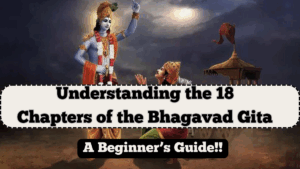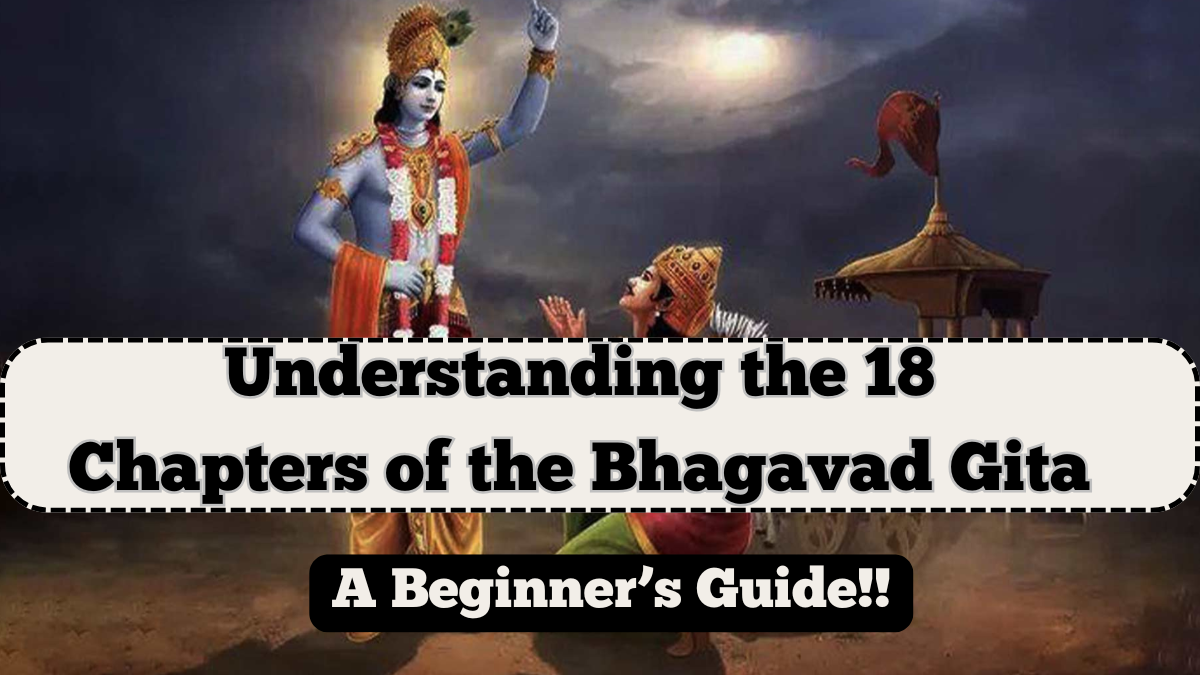The Bhagavad Gita is one of the most revered spiritual texts in the world, offering timeless guidance on life, duty, and devotion. Spoken by Lord Krishna to Arjuna on the battlefield of Kurukshetra, it comprises 18 chapters that address various aspects of human existence—from inner conflict to self-realization. For anyone beginning their spiritual journey, understanding the Gita’s chapters in simple terms can offer deep insight and strength.
Each chapter of the Bhagavad Gita carries a specific message and practical wisdom. This Gita guide is perfect for beginners who want to grasp the essence of this Vedic text without being overwhelmed.

Structure of the Bhagavad Gita
The Bhagavad Gita consists of 700 verses spread across 18 chapters, grouped into three main sections:
-
Chapters 1–6: Karma Yoga (Path of Selfless Action)
-
Chapters 7–12: Bhakti Yoga (Path of Devotion)
-
Chapters 13–18: Jnana Yoga (Path of Knowledge and Renunciation)
Together, these offer a holistic view of life and spirituality, combining logic, emotion, and transcendental wisdom.
Chapter-Wise Summary for Beginners
Here’s a simplified summary of all 18 chapters of the Bhagavad Gita for easy understanding:
| Chapter | Title | Focus Area |
|---|---|---|
| 1 | Arjuna Vishada Yoga | Arjuna’s despair and moral dilemma |
| 2 | Sankhya Yoga | Soul’s immortality, duty, detachment |
| 3 | Karma Yoga | Importance of selfless action |
| 4 | Jnana Karma Sanyasa Yoga | Action through knowledge, divine purpose |
| 5 | Sanyasa Yoga | Renunciation vs. Action |
| 6 | Dhyana Yoga | Meditation and mind control |
| 7–12 | Bhakti Yoga Chapters | Devotion, divine forms, surrender |
| 13–18 | Jnana Yoga & Final Lessons | Nature of soul, duties, liberation path |
These simplified chapters help spiritual seekers align their daily life with higher purpose and gain clarity about the true self.
Why the Gita Is Still Relevant Today
In a world filled with confusion, stress, and distractions, the Bhagavad Gita remains a source of clarity and strength. Whether you’re struggling with decision-making, emotions, or your spiritual path, the teachings of Krishna to Arjuna serve as a mirror for your inner journey.
The Vedic wisdom from these chapters teaches:
-
Balance between action and detachment
-
The importance of dharma (duty)
-
Managing desires and ego
-
Developing inner peace through devotion or knowledge
Modern readers and yogis across the world still turn to the Gita guide for clarity, inspiration, and spiritual grounding.
How to Start Studying the Gita
If you’re new to the Bhagavad Gita, begin by reading one chapter at a time and reflecting on its central message. Use a simple translation or commentary, and consider:
-
Reading 5–10 verses daily
-
Listening to audio versions or podcasts
-
Joining a Gita study group or satsang
-
Practicing meditation along with Gita reading
The goal is not just intellectual understanding but transformation through Vedic wisdom that uplifts both thought and action.
FAQs
What is the Bhagavad Gita about?
The Bhagavad Gita is a dialogue between Lord Krishna and Arjuna, covering philosophy, duty, self-realization, and the path to liberation through Vedic wisdom.
How many chapters are in the Bhagavad Gita?
There are 18 chapters in the Gita, grouped into three core paths: Karma Yoga, Bhakti Yoga, and Jnana Yoga, each offering unique insights for spiritual growth.
Is the Gita relevant for non-Hindus?
Yes. The Gita guide is a universal spiritual text. Its teachings apply to people of all backgrounds who seek purpose, strength, and peace.
Can I read the Gita without any teacher?
Absolutely. Beginners can start with a simplified version of the Bhagavad Gita, but deeper study with a mentor can enhance understanding over time.
What is the best way to study the Gita?
Start slow, read daily, reflect on its meaning, and try applying the Bhagavad Gita teachings in your actions and mindset for lasting impact.
Click here to know more.
